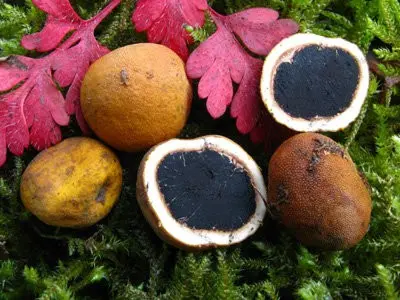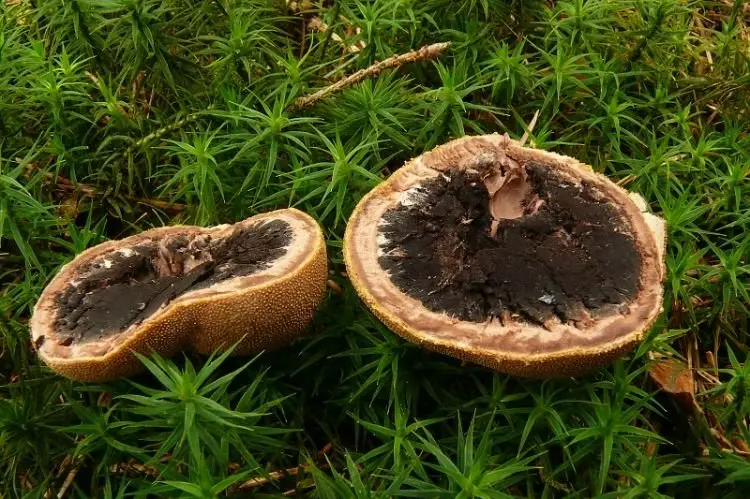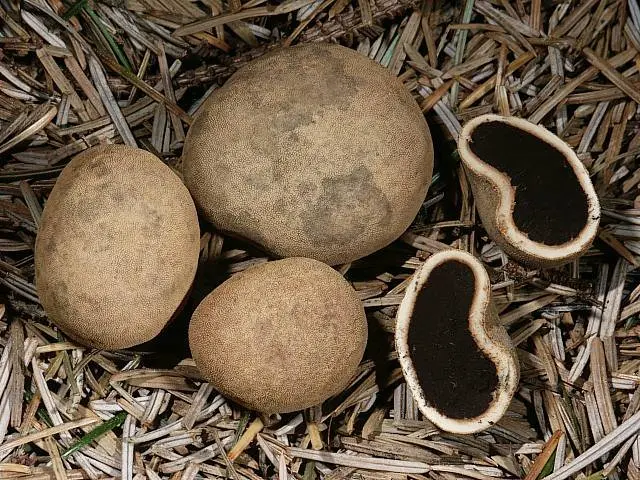Elaphomyces granulatus
- Department: Ascomycota (Ascomycetes)
- Subdivision: Pezizomycotina (Pezizomycotins)
- Class: Eurotiomycetes (Eurocyomycetes)
- Subclass: Eurotiomycetidae
- Order: Eurotiales (Eurociaceae)
- Family: Elaphomycetaceae (Elaphomycetaceae)
- Rod: Elaphomyces
- Type: Elaphomyces granulatus (Truffle oleins)
- Elafomyces granulosa
- Elafomyces granular;
- Elaphomyces cervinus.
 Deer truffle (Elaphomyces granulatus) is a mushroom from the Elafomycete family, belonging to the genus Elafomyces.
Deer truffle (Elaphomyces granulatus) is a mushroom from the Elafomycete family, belonging to the genus Elafomyces.
The formation and primary development of the fruit bodies of the deer truffle takes place shallow in the soil. That is why they can rarely be found when forest animals dig the ground and dig up these mushrooms. Fruiting bodies located under the soil surface are characterized by a spherical irregular shape, and only sometimes they can be wrinkled. Their diameter varies within 2-4 cm, and the surface is covered with a dense white crust, which becomes slightly pinkish with a shade of gray on the cut. The thickness of this crust varies in the range of 1-2 mm. the outer part of the fruiting body is covered with small warts densely located on the surface. The color of the fruiting bodies varies from ocher brown to yellowish ocher.
In young mushrooms, the flesh has a whitish color, and as the fruiting bodies ripen, it becomes gray or darkish. The surface of fungal spores is covered with small spines, is characterized by black color and spherical shape. the diameter of each such particle is 20-32 microns.
Deer truffle (Elaphomyces granulatus) can be found quite often in summer and autumn. Active fruiting of the species falls on the period from July to October. Deer tinder fruit bodies prefer to grow in mixed and coniferous (spruce) forests. Occasionally, this type of mushroom also grows in deciduous forests, choosing sites in spruce forests and under coniferous trees.

Not recommended for human consumption. Many mycologists consider the deer truffle to be inedible, but forest animals eat it with great pleasure. Hares, squirrels and deer are especially fond of this type of mushroom.

Outwardly, the deer truffle is a bit like another inedible mushroom – the mutable truffle (Elaphomyces mutabilis). True, the latter is distinguished by the smaller size of the fruiting body and a smoother surface.









